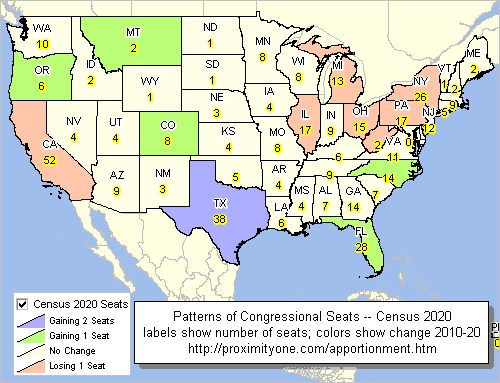Join us in the every Wednesday Zoom web session
— click here for 10/11/23 overview & connectivity details
Who Benefits?
– strategists needing to understand demographic-economic change
– policymakers and staff and stakeholders dealing with policy development
– residents/constituents/participants in a congressional community
– learners & researchers regarding CC, CD mapping & geodemographic topics About Congressional Districts & Congressional Communities
Congressional Districts. The November 2022 elections determined the representatives for the 118th Congressional Districts (CDs) January 2023-December 2024 session. The 118th Congressional District boundaries reflect the redistricting process based on Census 2020 results.
Congressional Communities. Congressional Communities (CC) are a concept and development of Congressional Communities, a non-profit organization. CCs have been developed to better enable constituents to have their voice heard by policymakers and vice versa. The approximate 7,400 CCs cover the U.S. wall-to-wall developed by the CC team and typically range from 30,000 to 70,000 population. CCs have been developed based on several criteria and are not arbitrary subdivisions of CDs. There are a set of CCs that nest exactly within each CD. Demographic data have been developed for each CC based on Census 2020 census block data by the CC team.
CC stakeholders may map and geospatially analyze their CCs and CDs.
CC organizations are comprised of residents of their respective CCs.
join in to a CC here .. illustrative details for a CC
Four Topics in this Web Session
.. illustrative applications are focused on California CD 47.
.. Use your own CD/region of interest.
.. ~30 minute presentation followed by discussion.
.. click here to start Open VDA Web GIS (OVDAW) .. all you need is a browser
.. step-by-step example .. optionally follow-along
Patterns of %Population Change 2020-2022 by 118th Congressional District

.. learn how to develop variations of this view.
2. 118th Congressional Districts & 2020-2022 Demographics
.. Congressional Districts Main
.. using the CD Census 2020 & ACS 2022 interactive table
In August 2023, the Census Bureau released the first Census 2020 demographics for the 118th Congressional Districts. In September 2023, the Census Bureau released the American Community Survey 2022 1-year estimates (ACS2022) for the 118th Congressional Districts. These data provide reasonably current data on a myriad of socioeconomic data. The Census Bureau also maintains the official national scope boundary files (for mapping and geospatial analysis) for the 118th Congressional Districts.
The Census Bureau also develops the County Business Patterns data for the 118th Congressional Districts. Learn more about the scope of these data and how they can be accessed and used. Aside from these data resources, the Federal statistical system (FSS) produces very little data for congressional districts.
What can I learn? Scope of annual ACS-based subject matter.
General Demographics .. Social Characteristics .. Economic Characteristics .. Housing Characteristics
3. 118th Congressional District & Congressional Community Diversity
.. Congressional Districts Diversity
.. using the CD & CC interactive table
Patterns of Diversity by Congressional Community .. CA CD 47
.. learn how to develop variations of this view.
4. Comparative GeoDemographic Narrative Profiles
.. using Demographic Analytics (DA) tool to compare CDs, CCs, and other areas
.. Census 2020 “DHC” detailed data released 8/31/23
.. accessing the new Census 2020 DHC-based “Demographic Profile 1” (DP1)
.. examples — running DA
– CA CC 0647001 compared to CA CD 47 Tabular Report
– CA CC 0647001 compared to CA CD 47 Narrative Profile
.. creating tabular report and narrative profile for areas of interest.
About VDA GIS
Use VDA GIS tools to meet wide-ranging mapping needs and geospatial analysis. VDA Desktop GIS and VDA Web GIS have similar features that can be used separately or together. Each is a decision-making information resource designed to help stakeholders create and apply insight. VDA Web GIS is access/used with only a Web browser; nothing to install; GIS experience not required. VDA Desktop GIS is installed on a Windows computer and provides a broader range of capabilities compared to VDA Web GIS. VDA GIS resources have been developed and are maintained by Warren Glimpse, ProximityOne (Alexandria, VA) and Takashi Hamilton, Tsukasa Consulting (Osaka, Japan).
Data Analytics Web Sessions
Join us in the every Tuesday, Thursday Data Analytics Web Sessions. See how you can use VDA Web GIS and access different subject matter for related geography. Get your geographic, demographic, data access & use questions answered. Discuss applications with others.
About the Author
Warren Glimpse is former senior Census Bureau statistician responsible for national scope statistical programs and innovative data access and use operations. He is also the former associate director of the U.S. Office of Federal Statistical Policy and Standards for data access and use. He has more than 20 years of experience in the private sector developing data resources and tools for integration and analysis of geographic, demographic, economic and business data. Join Warren on LinkedIn.






